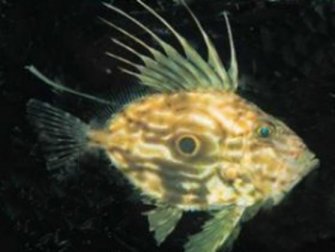
John Dory are most common around the inshore coastal waters of northern parts of New Zealand. They are also found in the Western Indian Ocean, the eastern Atlantic Ocean, the Mediterranean Sea.
The colours of the John Dory is an olive green colour, however they can be a yellowish brown to grey on the back with an almost metallic sheen, blending into the silver grey sides with a black spot on the side. These fish are weak swimmers and live near the sea floor among Rocks and weeds of shallow to moderate waters normally to depths of 50 mts, adults move to deeper waters during summer. Sometimes fish have been reported to depths of 200m. John Dory tends to be solitary fish.
John Dory have 10 long, distinctive spines on their dorsal fin. They average about 2 feet (60 cm) long and weigh roughly 5 pounds (2.4 kg). These fish are covered with tiny scales.
These fish have a massive head with extendable mouth, and rounded body shape when viewed from the side. The transverse body section profile is however of a narrow keel form. The dorsal fin has long anterior rays that extend into 9 to 10 spines, with spiny scales on their edges. A distinctive black spot is to be seen on the body.
This fish is noted for it's stalking abilities towards its prey (which compensates for its lack of speed)... which it then engulfs its food, by use of its extendable mouth.
John dory spawn more than once in a season, With spawning occurring between December and April on the northeast coast. The eggs are large and pelagic, taking between 12 and 14 days to hatch. Initially John dory grow rapidly with both males and females reaching 12 to 18 cm after the first year. From the second year onwards females grow faster than males and reach a greater maximum length. Females mature at a size of 29 to 35 cm in general, and larger females mature earlier in the season. The males mature at 23 to 29 cm.
Their food includes a wide variety of small fish, including young small herrings, sprat's etc.